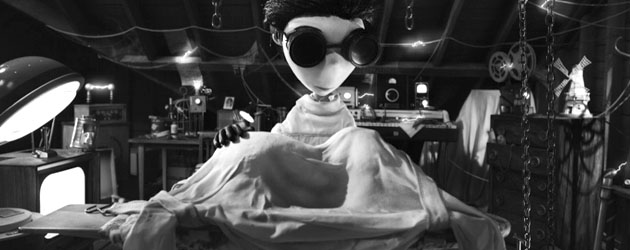Rick Heinrichs

I saw a photograph of a chart at one of the old MGM Studios titled, What Does an Art Director Do? It was broken up into maybe 16 panels showing an art director, a man wearing a coat and tie, and all the various things that he does on his day. It showed him drafting, working with set designers, and working with visual effects, which was called special effects in those days. At that point in time special effects included everything from hanging miniatures to glass-shot matte paintings. It made me realize, That dude does everything! That guy is making the world happen in every possible way. That’s really cool! That’s what I want to do!
AS: How did doing those models and sculptures with Tim Burton at Disney lead to actual production design?
RH: There was a transition from working at Disney Studios with Tim to working with Tim independently. We got a studio together in Pasadena and we started working on Frankenweenie, the original live-action short film for Disney. On Frankenweenie I couldn’t get the title of art director because that was a union position so I’m listed as associated producer. The head of Disney, Tom Wilhite, liked Tim and I. We were kind of a mini-team. And the head of the art department at Disney, the old gentleman John Mansbridge, acted as a mentor. He hired one set designer to work with us on Frankenweenie and while I was making illustrations and models this guy was breaking all these things up into construction drawings. I watched the whole process happen before my eyes just like in that chart that I saw.
I continued to make models and do stop-motion animation and special effects on Peewee’s Big Adventure, and on Beetlejuice I was the art director of visual effects. It was then I got to know Bo Welch who was an excellent production designer who took me under his wing. I let him know I wanted to be a production designer and when he had the opportunity to bring me on a picture that was going to start non-union and go union he hired me in his art department and put me to work. That was Ghostbusters 2.
It took me a number of years to work my way from model-maker/set designer to art director and finally to production designer. But I really am glad I went through that process because it’s a very professional world in the motion picture industry and I wanted people to feel that I had the authority to make the kind of comments that I would make about the work they were doing for me. If you haven’t really been there and set designed and had to do the whole slog through art direction then it’s hard to understand what it really is people are doing.
AS: What do you think are the required characteristics of a production designer?
RH: The most important thing is communication. This also involves selecting people who can hear what you say. Having a good idea is also key. Bo Welch calls the process “Breaking the Code” of a movie. It’s immersing yourself in it and not thinking you’ve got a quick and easy answer. Starting with the very basic building blocks and building from there. That preliminary period is incredibly scary and yet really a kick in the butt. It’s the most important period and what everything else leads from. That’s what separates the men from the boys or the women from the girls!